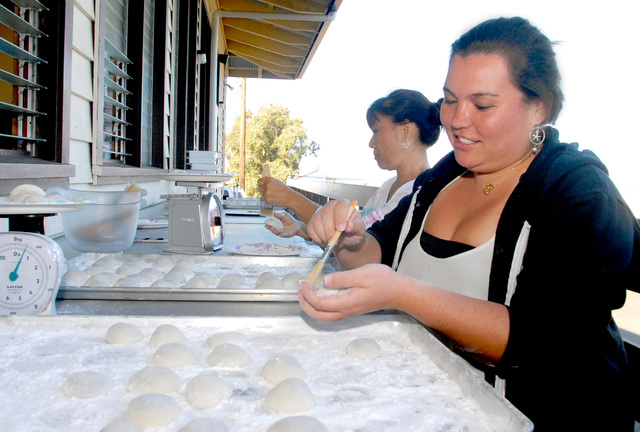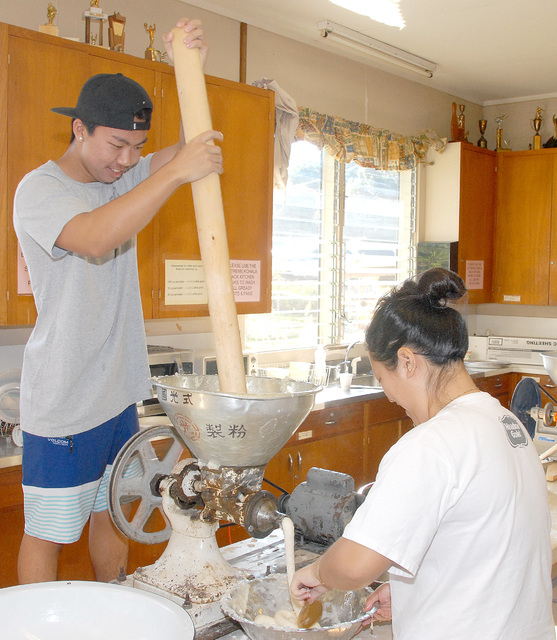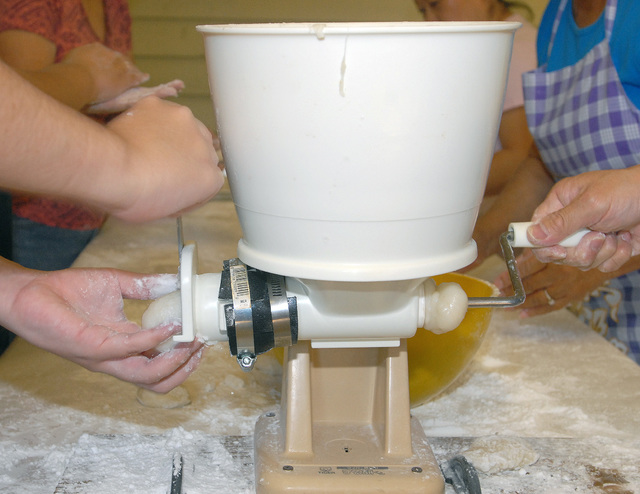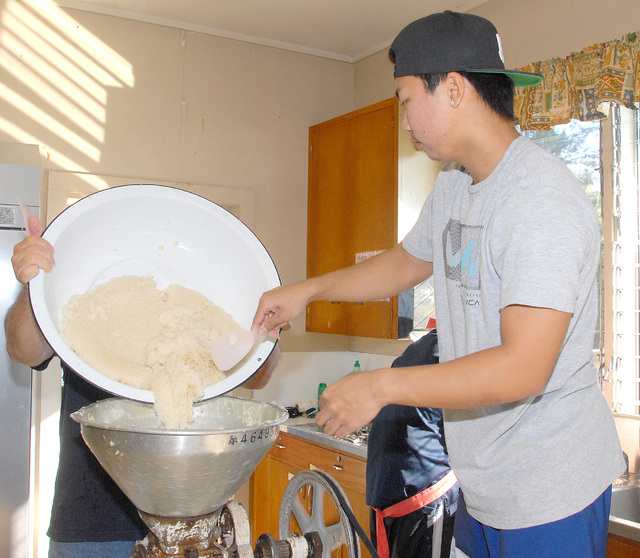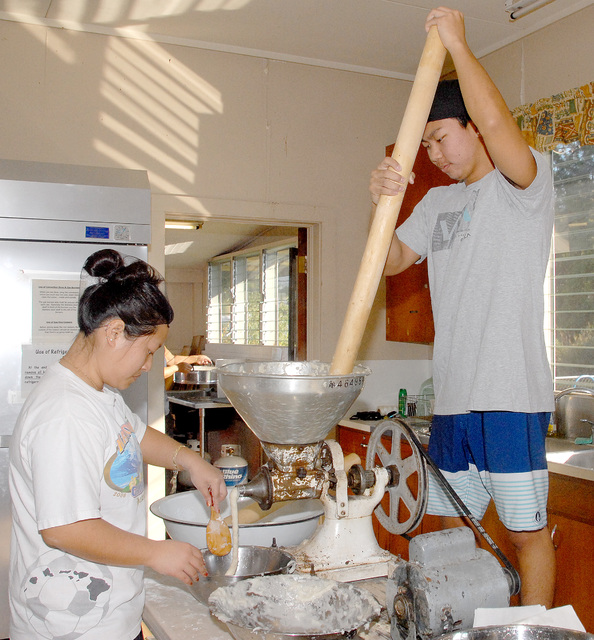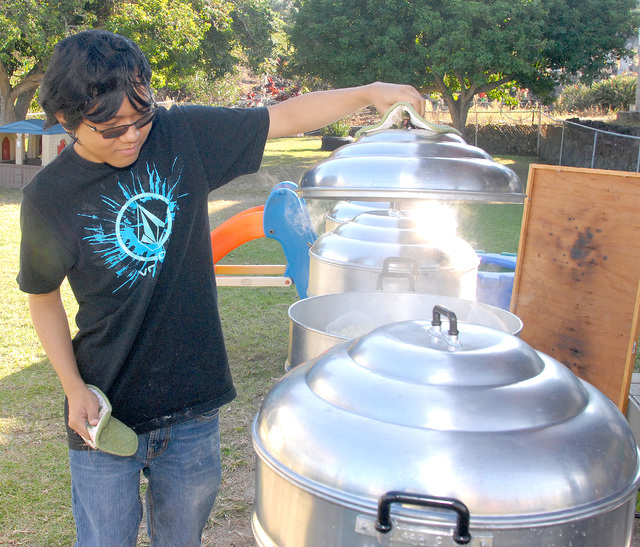KEALAKEKUA — The question gets passed up to grayer and grayer heads — just how long has New Year’s mochi been made at the Kona Hongwanji Mission? ADVERTISING KEALAKEKUA — The question gets passed up to grayer and grayer heads
KEALAKEKUA — The question gets passed up to grayer and grayer heads — just how long has New Year’s mochi been made at the Kona Hongwanji Mission?
The congregation laughs and bats the question down the line as hands quickly shape the traditional patties of rice flour. The answer is never sufficiently pinned down.
Let’s just say it’s been a long time.
Presoaking the rice, steaming the grain in mass quantities as the sun cracks the horizon, then making hundreds and hundreds of boxes of the treat — the traditional gathering drew 60 some church members, friends and family to the temple kitchen on Wednesday morning.
Morris Nagata has been a part of the annual event at the Kealakekua Buddhist church for three decades.
“All the kids that go away to college, they know we do this on the 30th, so they come back,” Nagata said.
As much a tradition of the holidays as bursting fireworks and red fish, mochi represents good luck, and it’s been made and sold at churches and in homes all over the island the past few days. At the Kona Hongwanji, there were 1,000 boxes to fill with one pound of mochi, in three flavors — plain; a variety with black bean paste in the middle, called An; and okazari, a decorative mochi in two layers with tangerine on the top.
Hands were busy all day.
Alan Matsumoto was at the church at 4 a.m., bundled in an Army jacket, lighting the fires under the four steamers in the backyard. Matsumoto has been making mochi since ninth grade, 30 years ago.
“I know they were doing it before I got here,” he said.
Some 600 pounds of rice had been soaking for three days to make it softer in the steamer. After being cooked with chunks of potato to make it softer and stickier still, the rice is ground into a paste using an electric mill. Then it’s on to the quick hands and long tables covered in potato flour.
“There are still some people who do it the hard way, by pounding,” Nagata said. “But for 600 pounds, no way.”
Traditional mochi pounding is a beautifully orchestrated event, with the pounder swinging a wooden mallet and the mixer crouching and darting his hands to mix the mochi between swings. It takes concentration and coordination, and it’s tiring.
“One-on-one is not bad. When you get two pounders it’s more of an issue.” said Matsumoto, who makes the treat the old way at such events as the Waimea Cherry Blossom Heritage Festival.
Norma Matsumoto, kyodan president, said the event is a fundraiser for the church’s Junior Young Buddhist Association. Most of the mochi is already presold.
“Some of the kids have gone away to college, but they come back and support the ones they have been working with all these years,” she said. “We all just jump into it.”


